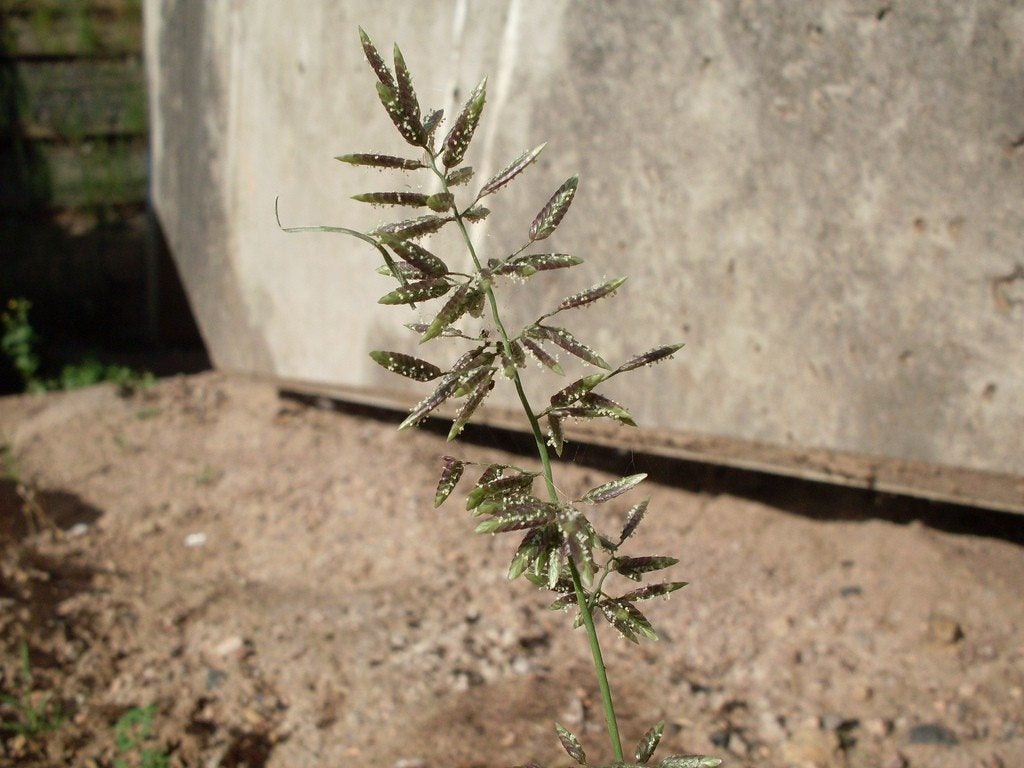Stinkgrass Control - How To Get Rid Of Stinkgrass Weeds


Even though you think about your garden and landscape all year long, you're probably never as busy working in it as you are in the summer. After all, summer is when pests and weeds rear their ugly heads. Stinkgrass weeds are among the annual grasses that plague and pester lawn care gurus and vegetable gardeners alike during these warm days. Read on to find out more about this plant and controlling stinkgrass weed.
What is Stinkgrass?
Stinkgrass (Eragrostis cilianensis) is a common annual grass that goes by many names, including strong-scented lovegrass and candy-grass. Its most common name, though, comes from the strong smell this grass produces from special glands located along the mature grass blades. These grasses are highly successful weeds because of their ability to produce an enormous number of seeds from a single plant. They prefer disturbed areas and will pop up in gardens, orchards and yards readily, especially if these areas were tilled well the previous spring. Fortunately, the mature plants don't put up much of a fight, instead leaving their seeds behind to continue the war. Stinkgrass control is possible, however, with persistence.
How to Get Rid of Stinkgrass
Stinkgrass in the lawn is an easy customer to remove; simple lawn maintenance will eventually starve the plant out. Stinkgrass weeds that are kept cut close to the ground are unable to produce a seed head, so once the seed supply from previous years is spent, no new plants can develop. Mow your lawn at least once every two weeks to keep the stinkgrass from reproducing and make sure to remove any sudden growth between mowings. It's a slow kill, but regular mowing is the safest method of stinkgrass control for lawns. In your garden, stinkgrass can be more difficult since mowing is rarely an option. Pull the weeds by hand at least once a week-- like with lawns, the key is preventing additional seed formation. If you use a pre-emergence herbicide in the garden, this is often enough to prevent any new seeds from developing into plants. More difficult to reach areas or perennial landscapes may benefit from the use of an herbicide when stinkgrass makes its appearance, but be careful not to spray wanted plants. Note: Chemical control should only be used as a last resort, as organic approaches are safer and much more environmentally friendly.
Gardening tips, videos, info and more delivered right to your inbox!
Sign up for the Gardening Know How newsletter today and receive a free copy of our e-book "How to Grow Delicious Tomatoes".

Kristi Waterworth was a regular contributor to Gardening Know How for many years, answering countless queries on plant pests and diseases.
-
 Do Deer Eat Peonies? How To Keep Them Away And Save Your Gorgeous Blooms
Do Deer Eat Peonies? How To Keep Them Away And Save Your Gorgeous BloomsPeonies are not usually favored by deer, but sometimes they go after the young shoots of the plants anyways. Learn how to keep deer away from beautiful blooms.
-
 15 Best Vegetables To Plant In May For A Summer Bounty Of Fresh Homegrown Produce
15 Best Vegetables To Plant In May For A Summer Bounty Of Fresh Homegrown ProduceGet planting your dream garden with these best vegetables to start in May – including options for direct sowing, indoor seed-starting, and planting seedlings.